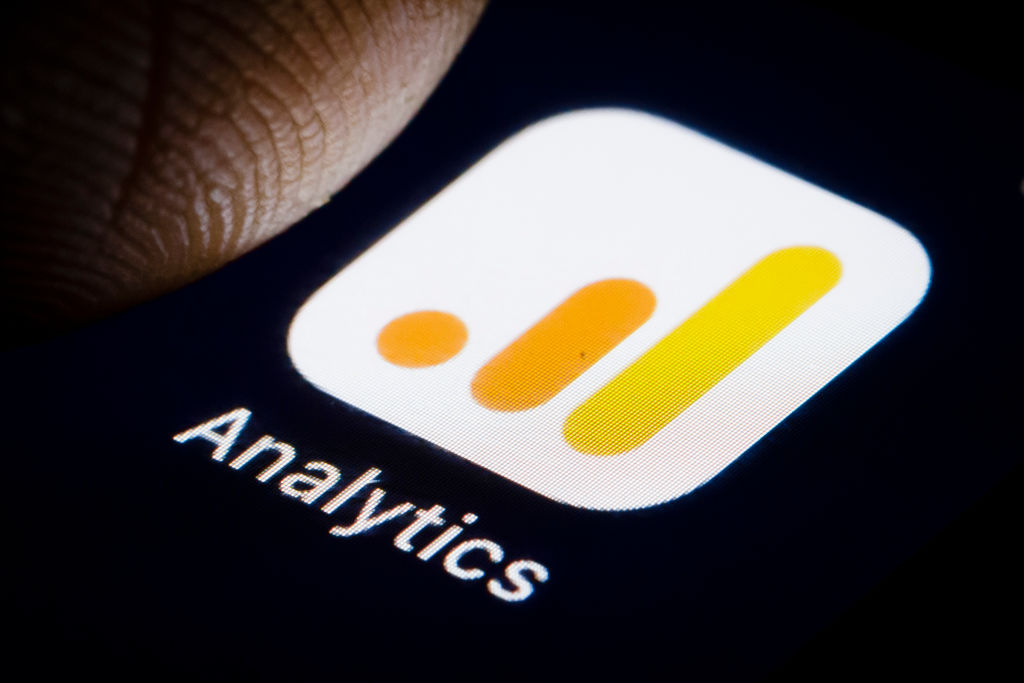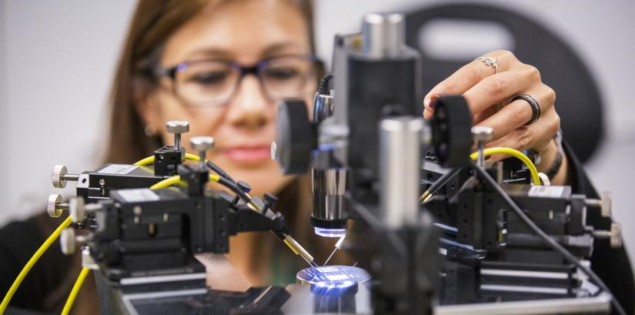France’s privacy watchdog latest to find Google Analytics breaches GDPR

The decision on this complaint has clear implications for any website based in
France that’s currently using Google Analytics — or, indeed, any other tools
that transfer personal data to the U.S. without adequate supplementary measures
— at least in the near term. For one thing, the CNIL’s decision notes it has
made “other” compliance orders to website operators using Google Analytics
(again without naming any sites). While, given joint working by EU regulators on
these 101 strategic complaints, the ramifications likely scale EU-wide. The CNIL
also warns that its investigation — along with the parallel probes being
undertaken by fellow EU regulators — extends to “other tools used by sites that
result in the transfer of data of European Internet users to the United States”,
adding: “Corrective measures in this respect may be adopted in the near future.”
So all U.S.-based tools that are transferring personal data are facing
regulatory risk. We’ve asked the CNIL which other tools it’s looking at and will
update this report with any response.
Security Risks Facing Web3 Developers

One of the challenges to securing dApps in the new Web3 world is engaging
security professionals in a meaningful way. A number of the cybersecurity
experts I follow on Twitter have been dismissive of Web3 and blockchain
technologies as fads at best and scams at worst. I asked Spanier what it will
take to get more of these folks to engage with Web3. “For security
professionals, here’s some advice to figure out if blockchain security interests
you,” he replied. “Treat your initial plunge as an exploratory journey. Look at
different security issues that have manifested themselves in the past, be they
with smart contracts or core blockchains. These projects are mostly open, so you
can look at their Github issues and patches. Review vulnerability write-ups and
deconstructions of previous attacks. Projects affected by a compromise will
typically post detailed write-ups. This would be a good start.” There’s a lesson
for developers here too. Because so much of what’s being developed for Web3 is
done in a very public way, there’s an opportunity to avoid the mistakes of
others. As you develop, consider doing a review of mistakes made by others a
part of your release process.
How to maximise value from IT vendor collaborations

It goes without saying that not everyone can be a maestro of everything. This is
hugely applicable to IT businesses who tackle complex tasks across several
technologies and infrastructures on a daily basis. It becomes clear that IT
companies that are running their strategies solo are not taking advantage of the
possible strengths of great IT vendor collaborations, which include several
experts of different skills across a plethora of applications. In other words,
it is likely that an IT partner with an appropriate talent and skillset would be
capable of selecting the right solution for the client, rather than the primary
vendor that does not specialise in the client’s specific needs. In order to
develop and nurture productive partnerships, IT businesses must know when to
partner, who to partner with, and how to add value to a partnership. A
partnership is a value added relationship that develops over time based on the
foundation of trust. It takes equal endeavour from both sides to evolve into an
IT partnership enabling both the parties to share their ideologies, work
cultures, expertise, and strategies.
Embracing Agile Values as a Tech and People Lead
A key agile principle to me is “Embrace Change”, the subtitle of XP Xplained by
Kent Beck. Change is continuous in our world and also at work. Accepting this
fact makes it easier to let go of a decision that was taken once under different
circumstances, and find a new solution. To change something is also easier if
there is already momentum from another change. So I like to understand where the
momentum is and then facilitate its flow. We had a large organizational change
at the beginning of 2020. Some teams were newly created and everyone at MOIA was
allowed to self-select into one of around 15 teams. That was very exciting. Some
team formations went really well. Others didn’t. There were two frontend
developers who had self-selected into a team that had less frontend work to do
than expected. These two tried to make it work by taking over more
responsibility in other fields, thus supporting their team, but after a year
they were frustrated and felt stuck. Recognizing the right moment that they
needed support from the outside to change their team assignment was very
important.
AI Biometric Authentication for Enterprise Security

Biometric authentication technology has been an important industry trend for
years, especially in 2021 due to the latest AI innovations available on the
market. According to IBM, 20% of breaches are caused by compromised
credentials. Worse, it can take an average of 287 days to identify and respond
to a data breach. AI-based security is increasing in usage and will be
necessary to remain competitive in any industry. IBM reports that as of 2021,
25% of businesses have completed deployment of AI-based security, while 40%
are partially deployed. The remaining 35% have not begun this process, and if
your business falls into this category you may be placing your clients at
great risk for dangerous data breaches. Investing in AI-based security can
save a business up to $3.81 million in 2021. Being able to use artificial
intelligence to identify and automatically respond to data breaches is
incredibly important for protecting the data and privacy of a company and its
customers. AI biometrics authentication provides yet another safeguard against
a data breach that is essential for businesses of any scale.
Graphene biosensor will drive new innovations in brain-controlled robotics

Recently, researchers have developed EEG sensors made from graphene, which
offers excellent conductivity and biocompatibility. Graphene-based
biosensors, however, often have low durability, corroding upon contact with
sweat, and exhibit high skin-contact impedance that hampers the detection of
signals from the brain. A novel graphene-based biosensor developed at the
University of Technology Sydney aims to overcome these limitations,
detecting EEG signals with high sensitivity and reliability – even in highly
saline environments. The sensor, described in the Journal of Neural
Engineering, is made from epitaxial graphene (EG) grown on a silicon carbide
(SiC)-on-silicon substrate. This structure unites graphene’s favourable
properties with the physical robustness and chemical inertness of SiC.
“We’ve been able to combine the best of graphene, which is very
biocompatible, very conductive, with the best of silicon technology, which
makes our biosensor very resilient and robust to use,” says senior author
Francesca Iacopi in a press statement.
Is artificial intelligence better than humans at making money in financial markets?

Our immediate observation was that most of the experiments ran multiple
versions (in extreme cases, up to hundreds) of their investment model in
parallel. In almost all the cases, the authors presented their
highest-performing model as the primary product of their experiment –
meaning the best result was cherry-picked and all the sub-optimal results
were ignored. This approach would not work in real-world investment
management, where any given strategy can be executed only once, and its
result is unambiguous profit or loss – there is no undoing of results. ...
Despite all their imperfections, empirical evidence strongly suggests humans
are currently ahead of AI. This may be partly because of the efficient
mental shortcuts humans take when we have to make rapid decisions under
uncertainty. In the future, this may change, but we still need evidence
before switching to AI. And in the immediate future, we believe that,
instead of pinning humans against AI, we should combine the two. This would
mean embedding AI in decision-support and analytical tools, but leaving the
ultimate investment decision to a human team.
Future for Careers in Automation Looking Bright

Trivedi points out there are many places where people can begin their
journey, starting in core-IT or IT engineering, before moving into
automation engineering/SRE (Site Reliability Engineer). “Another good path
is to start off in the technical support organization and learn more about
the technical side of the product,” he says. “Then, you can take on small
projects that help automate support issues, and you can use this experience
to move into SRE. Many people also start off in a systems administration
role before moving into an engineering role.” Nirmal said entry-level
professionals with an understanding and passion for automation technologies
have “endless opportunities” to embark on a career path that provides
tremendous value to a company's digital transformation and future growth. A
key change in how organizations are approaching automation is through
expanded use of AI and machine-learning. This means IT workers must have
knowledge of how AI advances automation and allows for more informed
decisions that improve outcomes.
Pay attention to your attention

An overly intense focus on a goal can lead to what cognitive psychologists
call goal neglect. That may seem counterintuitive to the average
goal-oriented MBA or entrepreneur, but take, for example, the dynamic at
work in micromanagement. Often, when leaders micromanage employees, an
intense focus on task performance distracts those leaders from the larger
goals of the company. They obsess over the trees and neglect the forest—and
drive employees crazy while they’re at it. Where you direct your focus is a
function of the brain’s attention system. This system has three subsystems,
which Amishi Jha, a professor and the director of contemplative neuroscience
for the Mindfulness Research and Practice Initiative at the University of
Miami, describes as the flashlight (or orienting system), which enables you
to selectively direct and concentrate your attention; the floodlight (or
alerting system), which enables you to take in the larger picture; and the
juggler (or executive function), which enables you to align your actions to
your aims. “What happens with goal neglect is that the flashlight is pointed
very intently, but the floodlight is not quite working,” she told me in a
recent Zoom interview.
Governance: Your Data Mesh Self-Service Depends on It
Federated governance is a balancing act. While a producer of a data product
should have full autonomy to build, populate and publish in any way they see
fit, they must also ensure that it is in a form that is easy and reasonable
for consumers to access and use. There are many parallels that can be drawn
between the microservices domain and the data mesh domain: Both empower
users to select the tools and technology that is best suited for their use
cases while simultaneously offering resistance to technological sprawl,
confusing implementations and difficulty in usage. For example, a
microservice platform may restrict the languages that developers may use to
a specific subset. In the data mesh, a similar analogy would be to restrict
the format of data products such that only one or two mechanisms are the
usable standards. In both cases, the goal isn’t to make life more difficult
for the creators, but rather to limit the technological sprawl and
implementation complexity, particularly if existing technologies and
standards are more than sufficient to meet the product needs.
Quote for the day:
"The actions of a responsible
executive are contagious." -- Joe D. Batton
No comments:
Post a Comment